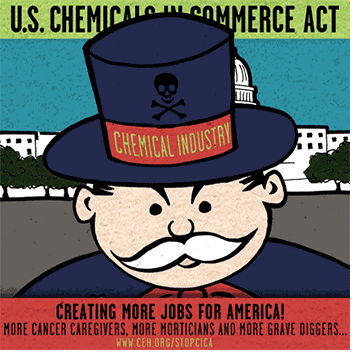New study says low levels of carcinogens may have a huge impact on our health
 Contaminated
drinking water—most of which currently meets legal quality standards—could
cause an estimated 100,000 cancer cases in the U.S., according to a new report.
Contaminated
drinking water—most of which currently meets legal quality standards—could
cause an estimated 100,000 cancer cases in the U.S., according to a new report.
The
study—which was published in the journal HeliyonHeliyon and
looked at 22 cancer-causing compounds found in 48,363 U.S. municipal water
systems— is the first to estimate what the cumulative cancer risk is from the
mixture of chemical contaminants in tap water (the study did not include the
roughly 13.5 million people on private wells).
"We're
seeing cancer risk estimated at about 100,000 cases for the U.S.– due to
drinking water contaminants at levels that currently meet requirements,"
lead author, Sydney Evans, a science analyst at the Environmental Working Group,
told EHN.
"Water
at the legal limit may still hold health risks," Evans said.
She
said, rather than look at one chemical contaminant at a time, they looked at
all 22 that could occur simultaneously on public water systems.
"Unlike
air [pollutants], water is still assessed one by one," Evans said.
"That's not how real-life exposures work."
The
100,000 cancer cases estimate is the calculated risk of people drinking water
over a lifetime (considered about 70 years). "For approximately 279
million people served by community water systems, or 86 percent of the U.S.
population, this number of cases represents an overall cumulative lifetime risk
of approximately … 4 lifetime cancer cases per 10,000," the authors wrote.
Most
of the cancer risk is due to arsenic and disinfection byproducts, senior author
Olga Naidenko, vice president of science investigations for EWG, told EHN.
"Drinking water disinfection is essential and saves lives," Naidenko
and colleagues wrote, but the disinfectants used to kill bacteria can turn into
carcinogenic byproducts when they react with organic matter.
Other
major contaminants included radioactive elements such as uranium and radium.
Cancer
risk was higher, in general, in Western states that have greater water
scarcity, including Nevada, New Mexico and Arizona. Arsenic, a naturally
occurring compound, is found more frequently in the Western U.S.
The
researchers said, if anything, their estimate is conservative due to
insufficient monitoring and carcinogenic compounds not currently tested.
"Numerous
other contaminants, such as nitrosamines, unregulated disinfection byproducts,
per- and polyfluoroalkyl substances (PFAS) and a variety of industrial and
agricultural chemicals, are not monitored as frequently or are not monitored at
all, precluding their inclusion in our study," they wrote.
Both
Evans and Naidenko said they hope the study provides a framework for
communities to better protect people from harmful water by looking at a suite
of contaminants — and potential toxic mixtures—rather than individual
pollutants.
"We
want to open the discussion, where we should we invest infrastructure
dollars?" Naidenko said.
"How much cancer risk are we as a society willing to accept?"
"How much cancer risk are we as a society willing to accept?"
See
the full study here.